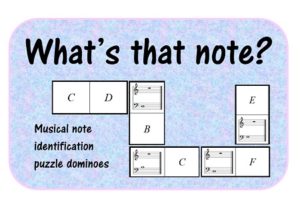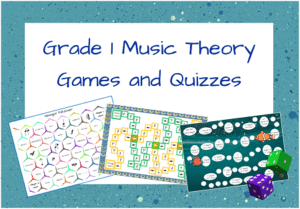How to use games with younger children
The benefits of games
When I am teaching younger children, let’s say five to nine although it does really depend on the individual child, I break the lessons up into thirds. 10 minutes or thereabouts looking over the pieces that they have been practising, five to 10 minutes playing a game and the final section either continuing to look at the pieces or going forward to new pieces. By chunking the lesson into smaller sections, the children are able to reset their concentration at the start of each new lesson. My students love this format and one the rare occasion that we spend longer on the pieces they ask, without fail, “Have you got a game today?” This does sometimes trigger an ultra-fast speed version of a game!
Case study: Georgia

Case study: Charlie

Tips for using games with younger children
You don’t need a new game for each lesson. Whilst they are working on the same skill, most children are happy to play the same game for multiple lessons in a row or to alternate between two games.
If you are short on time, set a timer and play for five minutes. Whoever has racked up the most points or got closest to the end square when the timer sounds wins.
Anything can be a game. You want to do some sight reading? Cut up the exercises, fold them in half and put them in a lucky dip bag. You want to use some flashcards? Put a timer on and see how many they can get correct in minute. Try to beat last week’s score. Adding an element of change or challenge will transform a mundane activity into a game.
Some children manage to roll the dice into the most inconvenient of locations. If you’ve got a wild dice thrower, download a dice app onto your phone.
Invest in a small white board with a staff printed on. This will be invaluable for explaining any gaps in knowledge that occur whilst playing.
Games can be used outside of lessons too. If the family are happy to invest time into their child’s learning then game can be used for homework too. If the parents aren’t musical then print out one of the guide sheets so they can check the answers if necessary.
Get started today
The Grade 1 Theory Pack contains games and resources to cover all the basics.



